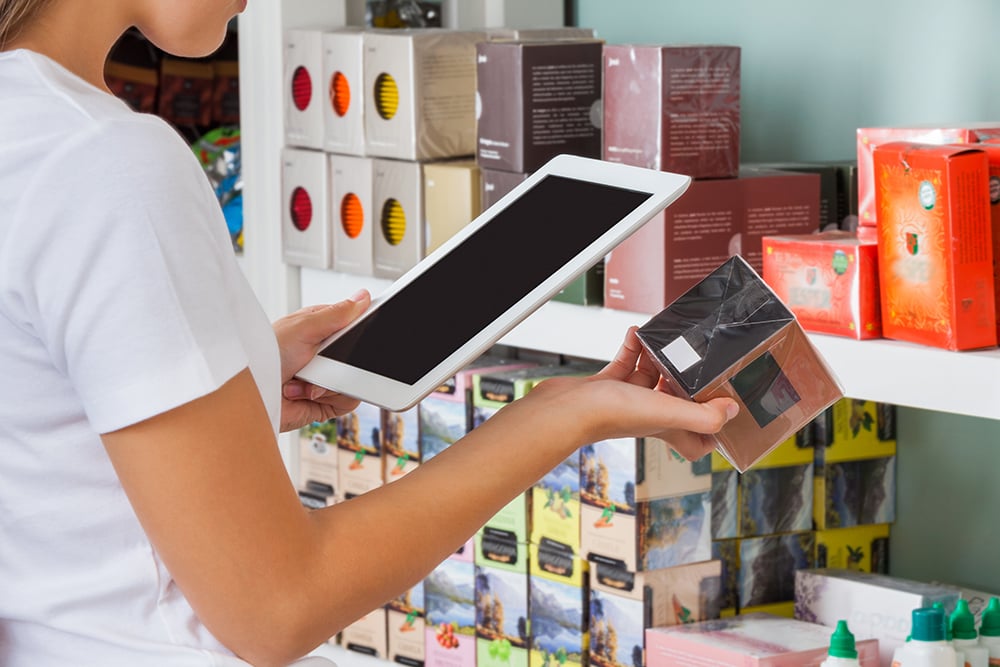Back to articles
The Connected Technologies Saving Physical Retail

Is the bricks-and-mortar shopping experience over? The world’s two biggest online stores think otherwise and are turning to wireless tech to marry online with the offline world.
News reports announcing the retail apocalypse have been commonplace in recent years. The likes of Abercrombie & Fitch, Foot Locker and Gap have shut hundreds of physical stores. While there’s no doubt that online shopping hit retailers hard in the early days, things are about to change thanks to wireless technologies.
Amazon
A fascinating case study in the future retail space is Whole Foods. Amazon bought the health food chain for USD $13.7 billion. The marrying of Amazon’s Prime membership program with Whole Foods physical store.
Now Amazon is testing out a new store concept that seems to be off to a good start. Amazon Go stores in Seattle, New York, Chicago and San Francisco aren’t just cashless, they’re cashierless too.
“Even though Amazon Go accepts cash at both stores, the times when I visited, I didn’t observe anyone requesting to use it, an observation that store employees confirmed,” wrote Andria Cheng on Forbes.
Alibaba
While it’s still early days in Amazon’s physical store experiments, global giant Alibaba are much farther down the road. In the past year, the Chinese giant opened 65 of its Hema retail stores that seek to merge online and offline.
Hema customers scan barcodes in-store with a mobile app to get product information and added value content such as recipe ideas. Because Alibaba knows everything about a customer’s purchase history and habits, the company can offer users home delivery on those items in the future. The stores also act as distribution centers. Specified staff pick orders from the shelves and ship to customers. Typically those within 3km of the store receive their orders within 30 minutes. Of course, this is all enabled by Alipay, and in some stores customers can even pay with a face scan.
Of course, only companies with the size, scale and variety of Amazon or Alibaba could realistically achieve such a joined-up shopping experience. But that’s not to say that smaller retail groups have to miss out. To see what can be achieved, let’s take a closer look at the technology making all this happen.
The technologies enabling connected retail
Retailers across the globe are connecting their stores with data-gathering sensors and devices to bring elements of the online experience to their physical stores. Not only that, but store managers can optimize layout, sales, and give a more custom experience to each shopper.
Electronic shelf labels (ESL) are now common in many supermarkets. These digital displays were first introduced by Scandinavian company Pricer in 1995. Today, retailers all over the world are adopting the technology, which now features discount codes, QR codes and other product information on LCD or e-paper displays. An ESL-enabled shop makes it much easier for store management to keep pace with online sales, price matching, and other campaigns. By combining NFC tags in ESLs with an app-based loyalty system, stores could offer customers a unique price on items they are most interested in.
Pricer still uses Optical communications for their tags, but the market has quickly evolved and embraced 2.4GHz wireless technologies using protocols ranging from proprietary to Bluetooth Low Energy. This change allows ESL to become a part of a more complex and rich wireless network inside each store.
As many retailers are discovering, their existing lighting system is the perfect conduit for introducing connectivity and sensors. Lighting is everywhere in a commercial environment and most importantly it is not reliant on battery power.
By connecting sensors to a Bluetooth mesh network in the lighting system, lighting can be automatically controlled depending on the number of people in parts of the store. Movement of people can be tracked, helping stores to optimize layout.
But there’s also benefits to the customers too, as the lighting system becomes a backbone for data and smartphone use in the store.
By adding the direction finding capabilities of Bluetooth 5.1 into lighting or a distributed network of low cost gateways, retailers can easily build heat maps of their stores to learn more about customer behavior. This also benefits shoppers, who can find the products they want more quickly, potentially with uniquely targeted pricing. This is possible by simply carrying small trackers. This could be the loyalty card itself with embedded Bluetooth SoC and battery, or by using the retailer’s app on a smartphone.
Read more: Quuppa’s Direction Finding Experience Comes to Bluetooth
Extending the life of physical retail stores
Of course, it’s easy to argue that online shopping has caused the closure of thousands of physical retail stores. But I believe that there is still room for physical stores to survive and be relevant for many years to come.
The key to succeed is to embrace a radical change and to use new technologies in order to enhance the customer experience and to offer something complementary to what offered online. Whether the innovation is in the supply chain, the in-store experience or on pricing, it is up to the retailers to decide what will work best for them. But whatever that solution is, wireless technologies will be there.


